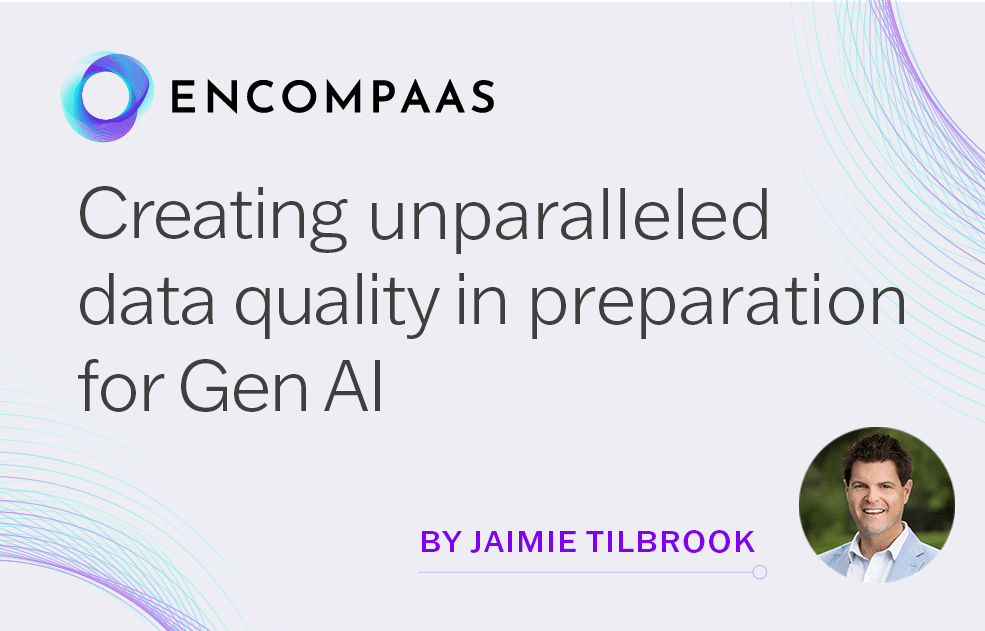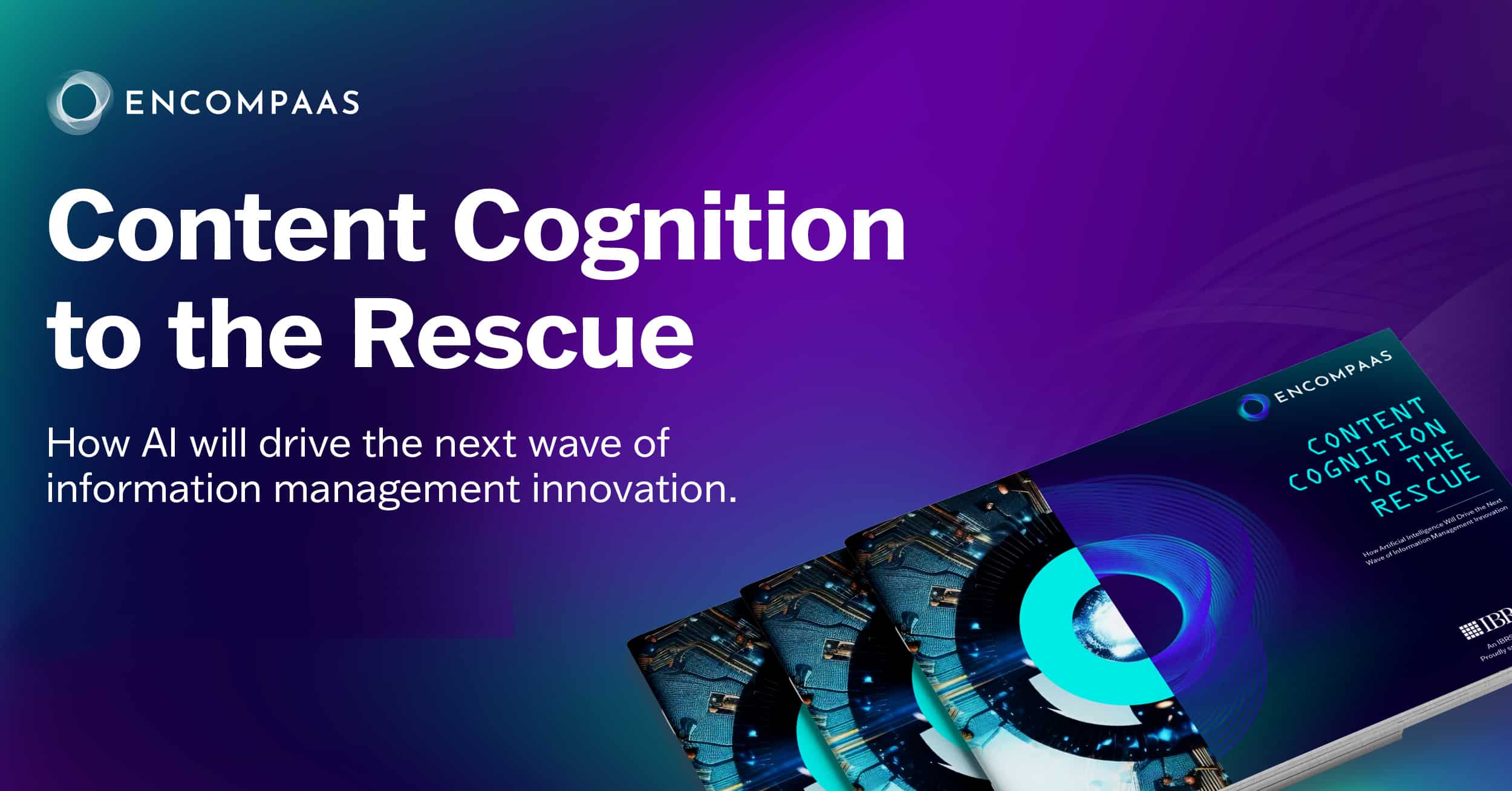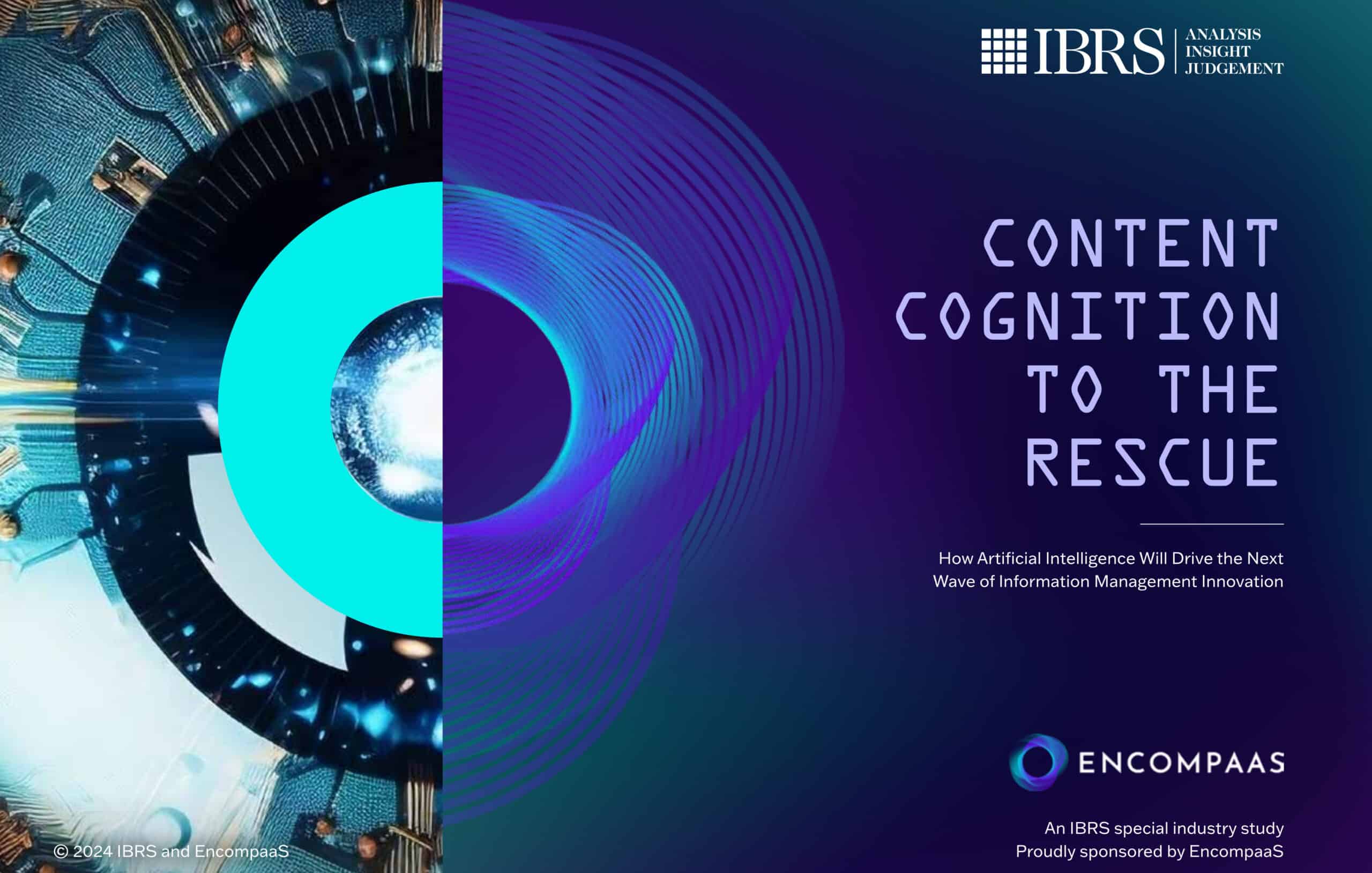Digital by design – Human when it matters
Authored by Michelle Phillips - Jun 20, 2023

Bendigo and Adelaide Bank is underway on a quest to innovate the digital workplace and deliver against customer and staff expectations and regulatory obligations. Bendigo and Adelaide Bank CIO Andrew Cresp outlined the journey so far in a discussion with Microsoft’s Director of Financial Services Rebecca Engel and Chief Technology Evangelist from EncompaaS Cassandra Bisset.
When Andrew Cresp joined the bank three-years ago he commenced a program to simplify and modernise the technology landscape for the organization. Interestingly one of the better use cases was their document management capability. This discussion navigates the consolidation of thirteen document management systems to one, working with leadership to prioritise projects, novel approaches for supporting staff when moving to the cloud and developing strategies to deliver against the intent of regulatory requirements for greater flexibility and scale.
Consolidating systems allows you to focus
Bendigo and Adelaide Bank has completed a journey to consolidate a diverse array of document management systems into SharePoint, with the EncompaaS platform providing discovery and automated classification. The multiple systems were the result of an extensive and quick set of acquisitions that had seen the organisation grow to over 7000 employees.
We had 13 different document management solutions connected to various monolithic applications, we have now consolidated onto SharePoint using EncompaaS for its records management capability. Those 13 were in different states of application and infrastructure health so by moving from many to one you actually get to put some focus on it and manage it a lot better. That’s pretty important knowing our customer expectations play out either through our regulators or directly, it is ever changing especially regarding privacy
Said Andrew Cresp
Understanding organisational culture and project interdependencies helps you prioritise
Bendigo and Adelaide Bank has approximately 1000 subject matter experts (SMEs) and as Cresp explains that can be a double edge sword. Cresp recalls having conversations where he has stated there will be a focus on one project, “this is our number one thing and you know the entire organization sort of straightens up behind that. But there is a real danger in doing that too because with 1000 people we can get a lot of stuff done and there is risk in being myopic”. Particularly when there are multiple competing projects and outcomes to be delivered.
Bendigo and Adelaide Bank is known for its very strong cultural identity of feeding back into the prosperity of others, its customers and the community. This community focused culture is pervasive throughout the Bank and Cresp understanding the importance of this incorporated it into projects and change initiatives he put forward to ensure they resonated with staff and leaders.
One such example is Cresp sharing his top ten projects with his team and asking them where they can add value. “For me it’s always about giving our engineers and technology leaders as much context as possible, to say these are the business outcomes we’re looking for.”
Cresp recognises there is also the need to understand the sequencing required and interdependencies between projects, technologies, business units and outcomes but to also manage these elements collaboratively. This is something the bank is getting better at and was estimated to have taken approximately 2 years to get “fitter at working between these interdependencies across the organisation”.
Find innovative ways to support staff in changing ways of working
Cresp reflects that the Bank was behind the cloud race 2.5 years ago and needed to do an uplift in training for the organisation, not just for the technology part but for the organisation more broadly. “Covid in one way was a great democratisation and virtualisation of learning. There was a whole heap of events that we were able to attend virtually that we could not have afforded to send staff to the US for. We got access to some great thought leadership virtually”, said Cresp.
The bank found the learning uplift was greatly accelerated through that period and via the virtual platforms that had been whole heartedly embraced by the world.
The move to digital ways of working saw a number of valuable initiatives kicked off to share critical knowledge, lessons learned and to provide responsive support for project teams; Cloud Fridays and the Bendigo Pub are two examples. Engineers started having Cloud Friday sessions where they would talk about the two mistakes they had made and what they had learnt, the goal was to admit they were all learning, share their experiences and learn from each other.
The other initiative was driven by an aggressive migration project moving 30 apps in 30 days to get out of a particular data centre. To meet this deadline the engineer’s needed answers to their questions immediately and so the “Bendigo Pub” was born. A virtual room where someone from the Banks team of senior engineers would be available to help and answer questions. The Pub was open from 8am – 6pm and facilitated drop-ins at any time.
Identify early wins – they may not be what you expect
After analysing their enterprise architecture to find any duplication, the bank decided document management would be a good place to start and provide an early win. This may be seen as an unlikely candidate for most organisations and something you would not expect from a bank where front-end customer experience is paramount. However according to Cresp, concentrating on the back office has paid a front-end dividend.
“Lending, and home lending in particular, is going to be people’s biggest decision in their lives and do they want to do it digitally through self-serve or do they want some help through it? My experience in core banking transformations is to say most people want some help.”
“There will be digital parts to it which are generally loan application capture, tracking the application and document uploads, but there’s lots of aspects like checking property value and credit history that must be done by back-office staff. Therefore, the systems and capabilities that you have there will differentiate you from a customer perspective in how quickly you can process an application.”
A use case that is driving the adoption of AI & Machine Learning (ML) is the Bank’s desire to improve the quality of metadata captured with Loan Application submissions and removing the reliance on Lending Managers and staff to classify these documents.
Cresp poses the question; “will people understand the value chain in a complex 52 step loan origination journey? Experience says yes, no or maybe and this simply isn’t good enough”.
Metadata is essential for supporting the process and the long-term management of the loan. Poor-quality metadata makes it harder for staff to find all associated documentation – particularly 5 to 7 years after it was originally submitted and by staff that were not involved in the loan origination process.
Auto classification is a key focus of the EncompaaS implementation, with AI and ML to be used to identify and classify documents as they are created. This will remove the need for Bendigo and Adelaide Bank team members to manually classify documents, which will make the process faster, more accurate and improve overall compliance.
“EncompaaS can auto classify a certificate of insurance and put it in SharePoint so it can be found rather than having to go through a process of annoying people and asking them to go through it” said Cresp.
Understand regulatory intent to keep ahead of the wave of obligations
Bisset opened the next part of the discussion on regulatory compliance with a different perspective; “with regulatory oversight you don’t always want to be stuck on someone else’s agenda. You want to get to the spirit of the regulation, leverage what can give advantage and not just tick the compliance obligation box. Maybe this is something you both want to comment on?”
Over the past 7-8 years the financial services industry has seen enhanced regulatory scrutiny, at a time when both financial services institutions and the regulators were effectively learning how to capture the amount of data needed to understand what had gone on. From Engel’s experience the regulator would issue a notice and the Financial Services staff would scramble over the weekend to find the required documents.
It became apparent that as an executive, as the board and as the regulator you needed to have confidence that you could know and show quickly that you could answer the question of assurance; have we met the obligation, are we continuing to meet the obligation and what does the control framework look like.
Said Rebecca Engel
These regulatory obligations require a continuing effort and on top of this in 2017 there was the Royal Commission into Misconduct in the Banking, Superannuation and Financial Services Industry which resulted in several new regulations being introduced and a whole new category of capability around Risk Management. Not only were the banks having to “know and show” against existing regulations but also the new regulations as well.
The regulatory demands on the business and its people were snowballing and not easily addressed by legacy and manual processes. Engel believes “it is incumbent on technology leaders to lift our compliance and risk friends out of the whiplashing environment they are currently in. Technology is now available that can help do this and provide greater levels of assurance that you are meeting your obligations.”
Regulation in any sector be it financial services, government or pharmaceutical sees compliance and risk professionals in a similar position, they all have the same type of burden. Organisations can’t keep throwing more people at investigations, inquiries, or information requests in the hope of meeting their obligations, or simply put their hand out for a slap on the wrist and treat this as part of doing business. “Regulators are now looking for root-cause resolution to make sure these issues don’t happen again”, said Bisset.
Engel suggested that as financial markets continue to contract, the banking sector in particular cannot afford to underinvest in this space. And whilst an earlier comment suggested the majority of spending was on front end customer experience initiatives, regulatory compliance spend is more than you might think. “There’s a lot of analysis that indicates the cost of regulatory compliance is 45-50% of IT spend in FSI and the amount invested in growth, customer experience and finding new markets is a lot smaller than you think it is. The environment that we are creating has to be much more efficient. We need to have higher levels of compliance and assurance at a lower cost and the RegTech services that EncompaaS offers absolutely answers that question,” said Engel.
Think about cloud projects differently to deliver high value outcomes
Bendigo and Adelaide Bank prioritised their cloud projects to deliver better services for customers, they chose metrics that reflected the value of work being done in the cloud as opposed to the volume of work being done.
“With our cloud journey we didn’t want our metrics to be we’ve got 500 workloads into the cloud. We wanted the most changed workloads and most critical workloads in the cloud because that’s where we think we can move faster for our customers”, said Cresp.
“That required us to have a really strong cloud governance framework and make sure we could demonstrate to our risk community within the bank, our executive and finally to APRA (The Australian Prudential Regulation Authority) that we were going through good processes and had good controls. The conversation was more about how to move from artefact-based controls to continuous compliance from a delivery perspective.”
The Bank found the regulator to be very understanding but attributes this in part to the large amount of information they provided (to the regulator) on the conversations they were having with the board, the executive team and the risk and compliance committee. Of note was the alignment found between questions the regulator was asking and those that had been asked by the board, executives and the risk and compliance committee when Cresp met with them. This gave the regulator confidence that the right conversations were being had at all levels of the business on what they were doing and how they were managing risk.
An unexpected upside to the cloud migration was that service owners who had moved their critical workloads to the cloud had the opportunity to speak in front of the board, the executive, the risk and compliance committee and APRA – an opportunity they would not normally get. This was used as a good coaching opportunity and helped them to get better and better.
Recalibrating for the hybrid workplace
Bisset suggested the past two years had resulted in many organisations being forced to address the pent-up demand for collaboration that was previously restricted based on risk and security concerns. “Today we are seeing an interesting intersection of these things and thinking about how technology has a role to play in security, privacy, data protection and accessibility – supporting process simplification”, Bisset said.
At Bendigo and Adelaide Bank, Covid and its associated lockdowns saw electronic signatures rolled out in 6 weeks and Cresp admits it wasn’t the technology that had been holding it back, “there was nothing like the necessity of those quick lock-downs to move some things really quickly”.
The disruption to usual work practices saw a recalibration. Teams connected remotely via a conference call or videoconferencing platform as if they were in the office – this practice was extended to individuals that were not able to come into the office due to symptoms to allow them to remain connected to the rest of their team.
Cresp was conscious of the need to provide an equivalent experience for remote workers to those who were physically in the office. Engel noted Microsoft’s global Work Trend Indexes show approximately 70% of people love the flexibility that hybrid work offers, but they still genuinely want some face-to-face time.
Further making an observation on how important it was to facilitate remote work and to think back to the concept of work being an activity and not a place (more information can be found here: Work Trend Index: Microsoft’s latest research on the ways we work).
The recalibration of the workplace and the move to remote working has highlighted the challenges associated with managing vast amounts of corporate information. Governance and Legal professionals don’t know about everything that is created, by who and where it is stored.
This is where technology has a role to play in helping discover, classify, understand and manage content across the enterprise so organisations are not relying on individuals to know where to put it or what to classify it as. Industry statistics have indicated typically less than 10%-20% of data ends up in the Records Management system as intended. This opens the organisation up to significant risk.
The Banks choice to consolidate its 13 document and records management systems by moving to SharePoint as a supported hub with an automation and supervision layer provided by EncompaaS over this (and other enterprise systems) is going to give staff a consistent experience and help fill in the blanks.
Bisset poses the following question to Cresp; “so, thinking about doing the heavy lifting with tech as a starting point what are you thinking about heading towards in the future? Is this getting you more towards robotic process automation or preventative measures?”
From my perspective it is about improving the integrity of the data that we have and then determining what can we use this for that’s going to add business value. I don’t know the answer to that but people in our document management team are figuring out how to make processes easier for our customers. It is definitely about getting that information into shape and providing a consistent experience. The benefit of having SharePoint as the central record is it is very familiar but the flip side is that people think it is easier to setup than it is when you’re configuring for enterprise use,
said Andrew Cresp
Final reflections
Before closing out the discussion Bisset asks both Cresp and Engel for their final take aways. These final reflections have been distilled into seven key pieces of advice.
- Technology is essential to address today’s regulatory requirements.
- Regulations such as GDPR and CPS234 are changing the way we think about data and demanding we know where documentation is held and that we can safely remove it as part of the information lifecycle.
- When moving through digital transformation you don’t have to start with everything, today’s technology allows us to tackle projects modularly.
- Building the monolith takes time and in that time business change has occurred. You could be implementing a solution that is already out of date.
- Accept there will be trade-offs because you can’t always follow the same process with legacy systems and business flows.
- Establish a genuine learning culture, augment it to be more innovative and inquisitive.
- Look outside yourself and your industry to find places of improvement.

Book a demo
Let's get started
Experience the Power of EncompaaS!
Submit this form to see EncompaaS in action with a demo from our information management experts.
Request a demo today
* indicates required field
By submitting this form, you consent to be contacted by a member of our team by email or phone. You can unsubscribe from our communications at any time via the unsubscribe option in the email received. For more information on how EncompaaS uses your data, please refer to our Privacy Policy.
Related Resources

- blog

- press
‘Information Hyperinflation’ Challenging Ability of Australian Enterprises to Maintain Privacy and Security Governance, According to New Study
Hundreds of Information Management Professionals Surveyed in IBRS Report Sponsored by EncompaaS Confirm Growing Information Overload; AI-Based Tools Seen as Both Accelerating Problem and as Potential Solution
Learn More



